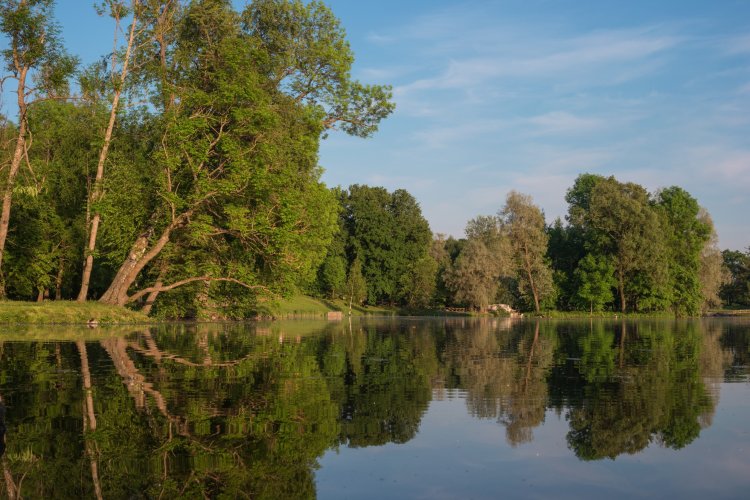It is not forbidden to gather mushrooms or birch juice in the forest, and the baskets of people will not be searched for small species. Neither, the authorities will demand from people the agreements on renting the forest areas where the mushrooms have been gathered – the Ministry of Natural Resources denied the reports about tightening the rules in this sphere. However, the businessmen who harvest mushrooms, berries, medicinal herbs and other wild plants in forests have to comply with certain requirements.
“The citizens are entitled to visiting the forests freely and gathering wild fruit, berries, nuts, mushrooms and other non-timber resources fit for consumption as food. It is a basic clause of forest legislation which is unaltered!” the Ministry stressed.
The basic rules of mushroom picking also remain unchanged. For instance, it is forbidden to gather listed species. There are relatively few mushrooms listed in the Red Book of Russia – less than 70 species including lichens which belong to the class of fungi.
The rarity of taxa and populations listed in the Red Book is divided into 6 categories (taxon is a group in classification consisting of objects grouped on the basis of the same features and attributes – ed. note):
0th category includes species which are likely to have been extinct. They have not been met in nature for several years: 20-50 year for vertebrae animals, 30-50 years for invertebrates, and 50-100 year for plant and mushrooms. However, the possibility of their existence is not ruled out completely.
1st category includes endangered species. These are taxa whose population has reduced to critical level, or whose habitats have changed so that they can become extinct in the near future. Those who are on the brink of extinction – single individuals – also belong to this category.
2nd category includes the species reducing in population and spreading, i.e., the taxa and populations which are reducing in number and may soon make it into the 1st category. This category also includes the species whose population has become relatively table after drastic reduction, yet on a lower level.
3rd category includes rare species, i.e., taxa and populations either with low number, usual habitat on a limited territory, or low density on vast territory being the standards typical of them. Special protective measures are required for preservation of them.
4th category includes the species with no definite status, i.e., taxa and populations which are likely to belong to one of the previous categories, yet there is not enough data about them to define their exact status, or the ones which do not fully meet the criteria of other categories, yet need special protective measures.
5th category includes recovering or being restored species, i.e., taxa and populations which have started being restored in number due to natural reasons or as a result of protective measures adopted and come close to the level, when they will not need special protective measures.
The listed mushrooms largely belong to the 3rd category – their habitats should be protected, as they grow on limited territories. Deforestation and forest fires, air pollution including the one caused by industrial development, climatic changes and expansion of farms – all these factors lead to new entries being made in the Red Book.
Arched Earthstar (Geastrum Fornicatum) can be met in European part of Russia up to the Ural region. Its 25-30 habitats in deciduous, coniferous and mixed forests are known. The mushroom grows on thick litter layers, rich humus soils and sometimes in the hollows of trees. The mushroom belongs to the 3rd category – the one of rare fungi – is listed in the Red Books of Leningrad, Tver and Tambov regions, protected on the territory of national reserves, and has the status of vulnerable specie in the Red Book of United Kingdom.
Russian black truffle is an even rarer mushroom. Due to being demanding to soils and commercial mushroom picking, this specie belongs to the 2nd category, as the population of it is rapidly reducing. Most often, it can be found in the south: the Caucuses, Georgia, Krasnodar region, the area of Anapa and Gelendzhik. It grows in broadleaf forests. Its fruiting bodies can be met during the period from May to February. The ecologists say that it is necessary to regulate truffle picking, control the population, protect the known and look for the new habitats of these mushrooms.
Tricholoma Colossus or Giant blewits is also reducing in number. This specie is popular in Leningrad, Kirov regions and Krasnoyarsk territory. It can be found in pine forests and grows from August to September. It is a mushroom with cap of 10-20 cm in diameter with pleasant taste and flavor. Along with Russia, it can be found in Europe, Japan and North Africa.
Sparassis crispa, sometimes called cauliflower fungus, is a mushroom on a thick, often not so pronounced stipe, with whitish fruiting body 35 cm in diameter and weight of up to 10 kg. It grows as parasite on the roots and at the foot of pine and spruce tree trunks in taiga zone of the Northern hemisphere. The specie belongs to the 3rd, rare category, as the features of changes in its population are not yet clear enough. However, it is obvious that these mushrooms reduce in number due to being picked by people and cutting of coniferous forests.
Clathrus ruber or Red lattice is a rare mushroom, which is on the verge of extinction in Russia due to adverse climate conditions. Most often, it can be met in Europe, mainly on Mediterranean and Black Sea coast. In mixed forests with mild climate, this species can be found near deadwood and rotten tree stumps. In Russia, up to 10 locations of it with 500 mushrooms are known.
In general, up to 60 fungi species are listed in the Red Book, and gathering them is punished by fines in different regions.
Photo: oktober64 / ru.123rf.com
Based on redbookrf.ru and Red Book RF






















